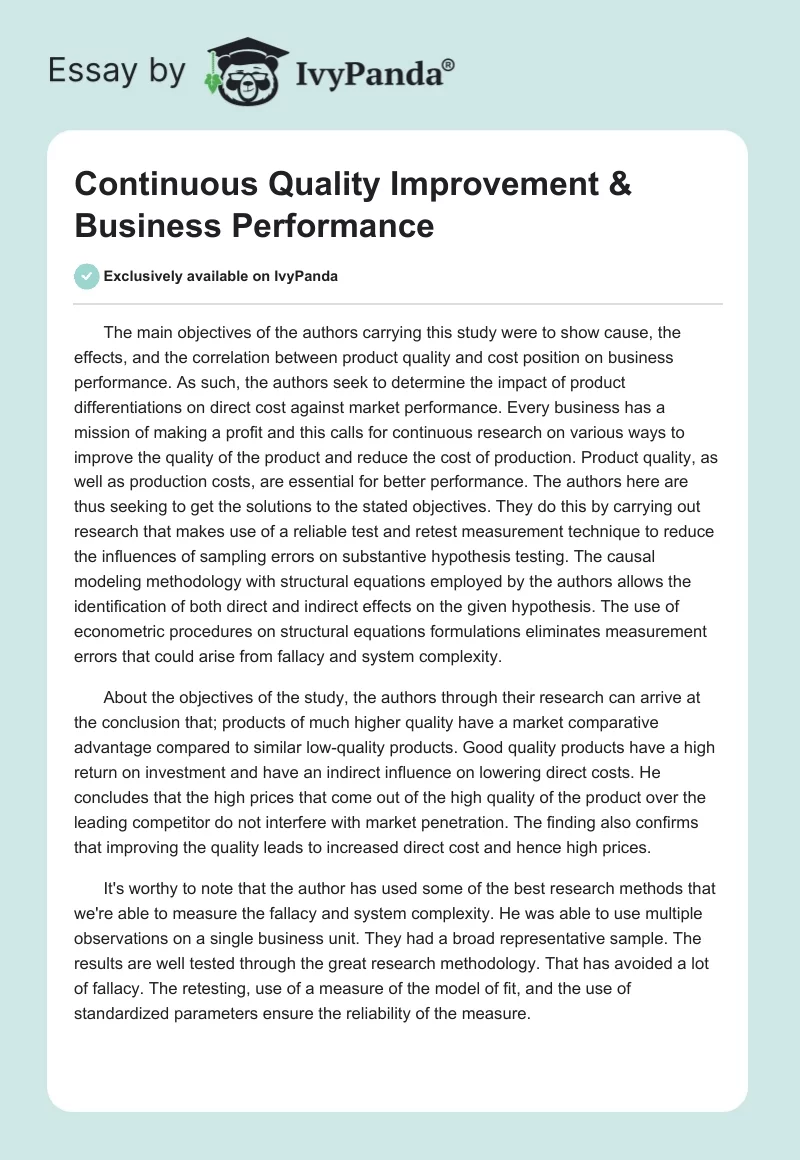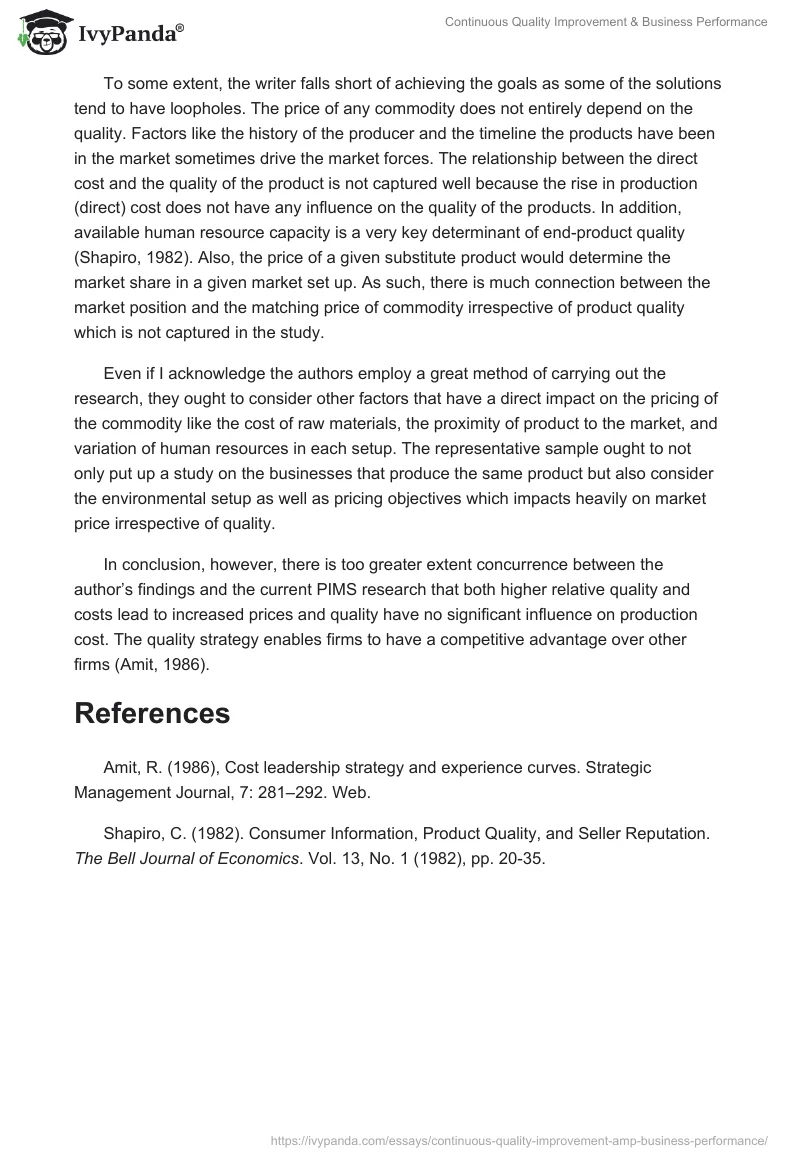The main objectives of the authors carrying this study were to show cause, the effects, and the correlation between product quality and cost position on business performance. As such, the authors seek to determine the impact of product differentiations on direct cost against market performance. Every business has a mission of making a profit and this calls for continuous research on various ways to improve the quality of the product and reduce the cost of production. Product quality, as well as production costs, are essential for better performance. The authors here are thus seeking to get the solutions to the stated objectives. They do this by carrying out research that makes use of a reliable test and retest measurement technique to reduce the influences of sampling errors on substantive hypothesis testing. The causal modeling methodology with structural equations employed by the authors allows the identification of both direct and indirect effects on the given hypothesis. The use of econometric procedures on structural equations formulations eliminates measurement errors that could arise from fallacy and system complexity.
About the objectives of the study, the authors through their research can arrive at the conclusion that; products of much higher quality have a market comparative advantage compared to similar low-quality products. Good quality products have a high return on investment and have an indirect influence on lowering direct costs. He concludes that the high prices that come out of the high quality of the product over the leading competitor do not interfere with market penetration. The finding also confirms that improving the quality leads to increased direct cost and hence high prices.
It’s worthy to note that the author has used some of the best research methods that we’re able to measure the fallacy and system complexity. He was able to use multiple observations on a single business unit. They had a broad representative sample. The results are well tested through the great research methodology. That has avoided a lot of fallacy. The retesting, use of a measure of the model of fit, and the use of standardized parameters ensure the reliability of the measure.
To some extent, the writer falls short of achieving the goals as some of the solutions tend to have loopholes. The price of any commodity does not entirely depend on the quality. Factors like the history of the producer and the timeline the products have been in the market sometimes drive the market forces. The relationship between the direct cost and the quality of the product is not captured well because the rise in production (direct) cost does not have any influence on the quality of the products. In addition, available human resource capacity is a very key determinant of end-product quality (Shapiro, 1982). Also, the price of a given substitute product would determine the market share in a given market set up. As such, there is much connection between the market position and the matching price of commodity irrespective of product quality which is not captured in the study.
Even if I acknowledge the authors employ a great method of carrying out the research, they ought to consider other factors that have a direct impact on the pricing of the commodity like the cost of raw materials, the proximity of product to the market, and variation of human resources in each setup. The representative sample ought to not only put up a study on the businesses that produce the same product but also consider the environmental setup as well as pricing objectives which impacts heavily on market price irrespective of quality.
In conclusion, however, there is too greater extent concurrence between the author’s findings and the current PIMS research that both higher relative quality and costs lead to increased prices and quality have no significant influence on production cost. The quality strategy enables firms to have a competitive advantage over other firms (Amit, 1986).
References
Amit, R. (1986), Cost leadership strategy and experience curves. Strategic Management Journal, 7: 281–292. Web.
Shapiro, C. (1982). Consumer Information, Product Quality, and Seller Reputation. The Bell Journal of Economics. Vol. 13, No. 1 (1982), pp. 20-35.


